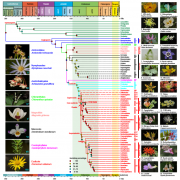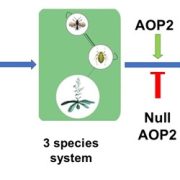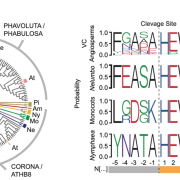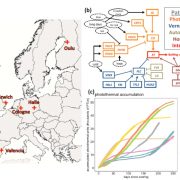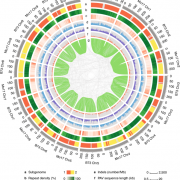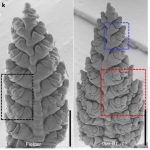Allelic shift in cis-elements of the transcription factor gene RAP2.12 underlies adaptation associated with humidity in Arabidopsis thaliana (Science Adv)
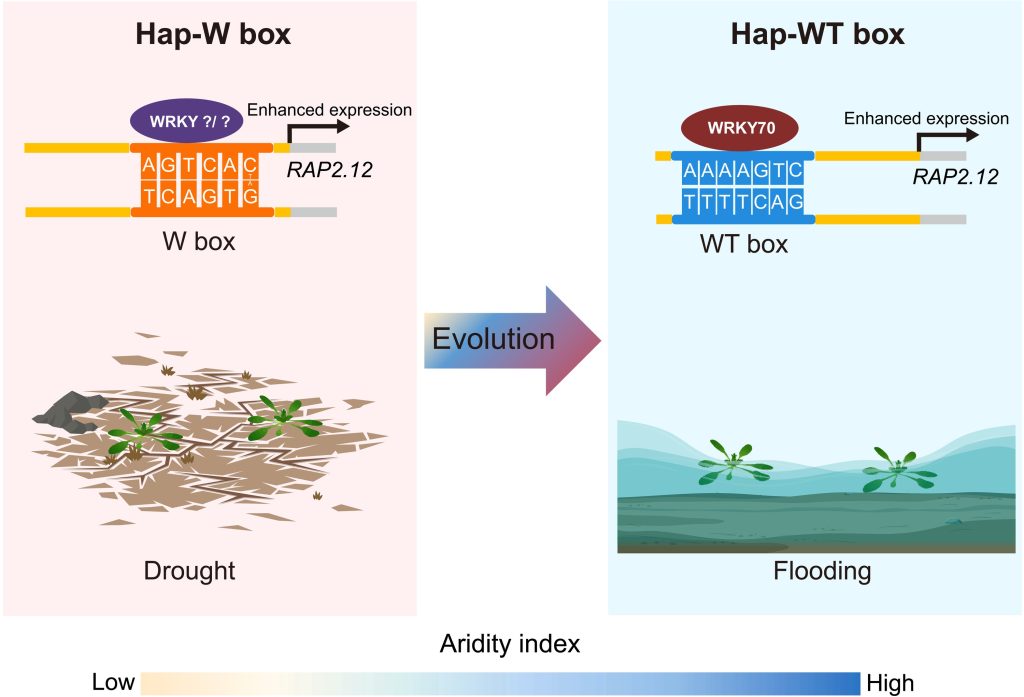 To better understand plant responses to different environments, Lou et al. compared Arabidopsis thaliana accessions derived from Sichuan (high precipitation/regular flooding) and Tibet (arid) to isolate genetic adaptations towards flooding stress. The two accessions showed divergent phenotypes: the Sichuan accession was able to recover much more effectively after submergence, while the Tibet accession could better survive drought. A GWAS with expression analysis revealed the RAP2.12 gene as the causal gene underlying flooding stress tolerance. RAP2.12 encodes a Group VII ETHYLENE RESPONSE FACTOR (ERFVII) which activates hypoxia-responsive genes. Although RAP2.12 derived from both accessions could activate flooding stress response, mRNA abundance of RAP2.12 was significantly higher in the Sichuan accession. Thus, the authors looked at the promoters of the two alleles. Promoter-Sichuan (pSic) accumulated RAP2.12 in hypoxic conditions at a higher rate than promoter-Tibet (pTib), and these promoters contain different cis-element sequences: pTib with a W box that can bind to WRKY transcription factors, and pSic with a WT box that is bound uniquely by WRKY70. WRKY70 is upregulated upon submergence, and WRKY70 acts specifically through the RAP2.12 alleles that have a WT box to induce submergence tolerance. Interestingly, under drought conditions, RAP2.12 is upregulated with pTib and downregulated with pSic. Ecological analysis suggested that arid and humid climates, leading to drought or hypoxic stresses respectively, were strong selective forces in accessional distribution of either WT or W boxes in RAP2.12, and further hint at A. thaliana’s evolutionary history as a plant originating in arid regions, later adapting to flooding stress after colonizing more humid lands. (Summary by Benjamin Jin) Science Advances 10.1126/sciadv.abn8281
To better understand plant responses to different environments, Lou et al. compared Arabidopsis thaliana accessions derived from Sichuan (high precipitation/regular flooding) and Tibet (arid) to isolate genetic adaptations towards flooding stress. The two accessions showed divergent phenotypes: the Sichuan accession was able to recover much more effectively after submergence, while the Tibet accession could better survive drought. A GWAS with expression analysis revealed the RAP2.12 gene as the causal gene underlying flooding stress tolerance. RAP2.12 encodes a Group VII ETHYLENE RESPONSE FACTOR (ERFVII) which activates hypoxia-responsive genes. Although RAP2.12 derived from both accessions could activate flooding stress response, mRNA abundance of RAP2.12 was significantly higher in the Sichuan accession. Thus, the authors looked at the promoters of the two alleles. Promoter-Sichuan (pSic) accumulated RAP2.12 in hypoxic conditions at a higher rate than promoter-Tibet (pTib), and these promoters contain different cis-element sequences: pTib with a W box that can bind to WRKY transcription factors, and pSic with a WT box that is bound uniquely by WRKY70. WRKY70 is upregulated upon submergence, and WRKY70 acts specifically through the RAP2.12 alleles that have a WT box to induce submergence tolerance. Interestingly, under drought conditions, RAP2.12 is upregulated with pTib and downregulated with pSic. Ecological analysis suggested that arid and humid climates, leading to drought or hypoxic stresses respectively, were strong selective forces in accessional distribution of either WT or W boxes in RAP2.12, and further hint at A. thaliana’s evolutionary history as a plant originating in arid regions, later adapting to flooding stress after colonizing more humid lands. (Summary by Benjamin Jin) Science Advances 10.1126/sciadv.abn8281


